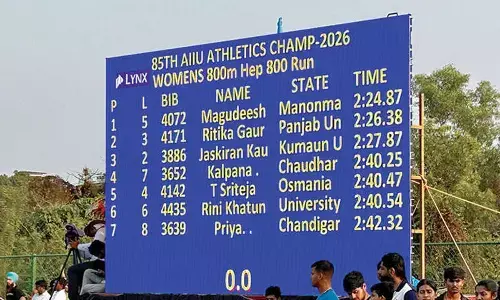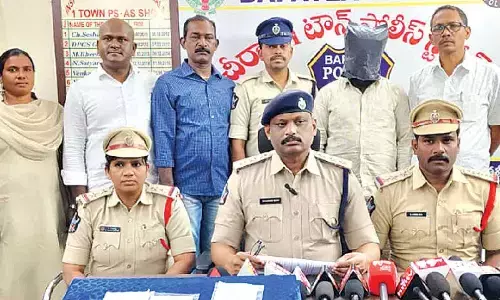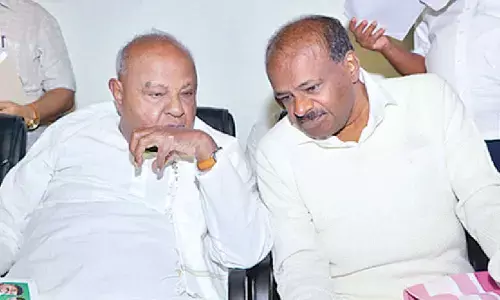Burgeoning NPAs: Whose money is it anyway?

To the utter dismay of deposit holders of commercial banks, the discussions on NPAs or bad loans are prolonging and there does not appear to be a solution in the near future.
To the utter dismay of deposit holders of commercial banks, the discussions on NPAs or bad loans are prolonging and there does not appear to be a solution in the near future. The NPAs of public sector banks (PSBs) are in the news again for the reason that the Finance Minister, Arun Jaitley, has finally conceded that there is a case for greater attention to be paid on checking this menace.
Unfortunately, the bad loans are growing in an exponential proportion. The statistics show that the total NPAs of PSBs which stood at Rs 5,89,502 crore by the end of September 30, 2016, had grown to Rs 6,06,911 crore by the end of December 31, 2016. Together with the loans that were restructured, the NPAs and restructured loans have grown to the level of Rs 9,64,000 crore from Rs 8,97,000 crore, an increase of about 7.5 per cent in just three months. The menace is spreading like a wild fire.
While this being so, what is more worrying are the solutions put forth for arresting the growth of these bad loan accounts. One measure that is considered and being pursued actively pertains to the recapitalisation of PSBs. The Central government had allocated Rs 25,000 crore for this purpose during the Budget for 2016-17 and another Rs 10,000 crore in the budget for 2017-18.
Early in August 2015 itself, the government launched a scheme called ‘Indradhanush’ to reform the ailing PSBs. The scheme included a seven point action plan to ameliorate banking sector to cover the measures such as: appointments, bank board of bureau, capitalisation, destressing, empowerment, framework of accountability and governance reforms.
The government has expressed the desire that it would continue with this scheme and prepare a “roadmap” to strengthen the PSB network. It is also thinking to come out with “Indradhanush2.0,” a comprehensive plan for recapitalisation of banks to the extent of about Rs 70,000 crore over a period of four years. The recent infusions can be considered part of the same drive.
The question in this context is: can this be considered a solution to the problem of NPAs. Irrespective of capital infusions, the NPAs are growing by leaps and bounds. Unless, the problem is tackled properly, capital additions will only turn out to be “pouring money into a drain.” Still a closer examination of the issue reveals the fact that the NPAs are occurring due to just new large loan accounts of about 20-30 persons/industries. In such a context, wiser thing would be to “handle with care” such accounts by using all diligence.
The government is yet to give a final shape to the ‘Insolvency and Bankruptcy Code,’ which is said to be under consideration for the past two years. The amendments to SARFAESI and Debt Recovery Acts are yet to yield any result. The other solution that emerged for debate relates to the merger of small banks with large banks, so that the latter would be in a position to handle the issue better.
Already the five associate banks of SBI got merged with the SBI, making it one of the top 50 banks in the world in terms of sheer size. It was also reported that the government is considering to merge the remaining the 27 PSBs form six large banks. The moot point here is whether the formation of large banks would do away with the problem of NPAs. It is naïve to hope so. The issue may appear relatively small, as is a line may look short before a bigger one!
It is also argued that larger banks will have the capability to handle credit risks more efficiently than smaller ones. It may be recalled that the Indian banking system itself is known for very traditional and conservative lending practices. This had resulted as a ”bolt from the blue” at the time of the failure of Lehman Brothers of USA.
It is those traditional and time-tested lending methods which saved the Indian banking sector falling prey to the debacle. Thus what is needed is the “mental makeup” of the bank boards in granting advances. It is only the failure of the higher administration that is contributing to the severity of the problem.
Even the RBI is playing the role of a “spectator” and not proposing any stringent action either on the bank directors or on the wilful defaulters. It is for this reason, the All India Bank Employees Association (AIBEA) is demanding that the RBI publish the names of wilful defaulters.
Even the government appears to be not ready to order for an in-depth inquiry into those 20-30 loan accounts, which were said to be the prime culprits. If need be, the government shall amend the age-old Banking Regulation Act of 1949 and bring these defaulters under check.
As the old saying goes, charity begins at home; the banks are required to take steps to clean their balance sheets urgently by weeding out these unscrupulous accounts with honesty and sincerity and not by recapitalisation, nor through merger. (Writer is Former Vice-Chancellor, Acharya Nagarjuna University)
By Prof K Viyyanna Rao

















